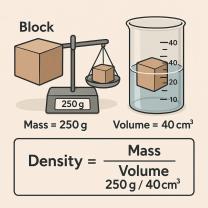What is the total number of outcomes?
The total number of outcomes in a given scenario or event is the complete set of all possible results or occurrences that can happen within that specific context. The number of total outcomes can vary widely depending on the nature of the event and the conditions or criteria involved.
To determine the total number of outcomes, you typically consider all the different ways that the event can unfold, regardless of whether those outcomes are favorable or not. The total number of outcomes represents the entire universe of possibilities for that particular situation.
For example:
Coin Toss: In a simple coin toss with a fair coin, the total number of outcomes is two: "heads" or "tails."
Rolling a Six-Sided Die: When you roll a standard six-sided die, the total number of outcomes is six, as it can land on any one of the six numbers (1 through 6).
Deck of Playing Cards: In a standard deck of 52 playing cards, the total number of outcomes represents all the different card combinations and sequences that can occur when drawing a single card. There are 52 possible outcomes, one for each card in the deck.
Lottery Numbers: In a typical lottery, the total number of outcomes is determined by the number of possible combinations of numbers. For example, in a 6/49 lottery (where you choose 6 numbers out of 49), there are 13,983,816 possible outcomes, representing all the different combinations of 6 numbers out of 49.
The concept of the total number of outcomes is fundamental in probability calculations, as it serves as the denominator when calculating probabilities using the formula:
Probability = (Number of Favorable Outcomes) / (Total Number of Outcomes)
In this formula, the "Total Number of Outcomes" represents the entire set of potential results against which you are calculating the probability of a specific event occurring.
Counting Total Outcomes: A Fundamental Probability Concept
Counting total outcomes is a fundamental concept in probability. It is the process of determining the number of all possible results of an experiment or event. The total number of possible outcomes is also known as the sample space.
For example, if you flip a coin, the sample space is {heads, tails}. There are two total possible outcomes: heads or tails.
If you roll a die, the sample space is {1, 2, 3, 4, 5, 6}. There are six total possible outcomes: 1, 2, 3, 4, 5, or 6.
If you flip two coins, the sample space is {HH, HT, TH, TT}. There are four total possible outcomes: heads-heads, heads-tails, tails-heads, or tails-tails.
Determining the Total Number of Possible Outcomes
There are two main ways to determine the total number of possible outcomes of an event:
- Listing: This is the simplest method, but it can be time-consuming for complex events. To use this method, simply list all of the possible outcomes of the event.
- Counting: This method is more efficient for complex events. To use this method, you need to identify all of the possible ways that the event can occur and then multiply the number of possible ways for each event together.
For example, to determine the total number of possible outcomes of flipping two coins, we can use the following counting method:
- There are two possible outcomes for the first coin flip: heads or tails.
- There are two possible outcomes for the second coin flip: heads or tails.
- Therefore, the total number of possible outcomes is 2 * 2 = 4.
Combinatorics and Probability: Calculating Total Outcomes
Combinatorics is the branch of mathematics that deals with counting and arranging objects. There are a number of combinatorial formulas that can be used to calculate the total number of possible outcomes of an event.
For example, the following formula can be used to calculate the number of ways to choose k objects from a set of n objects without regard to order:
nCk = n! / (k!(n-k)!)
where:
- n is the number of objects in the set.
- k is the number of objects to choose.
- n! is the factorial of n.
- k! is the factorial of k.
- (n-k)! is the factorial of n-k.
This formula can be used to calculate the total number of possible outcomes of a variety of events, such as:
- The number of ways to choose a starting lineup for a sports team.
- The number of ways to arrange the letters in a word.
- The number of ways to roll a set of dice and get a certain sum.
Conclusion
Counting total outcomes is a fundamental concept in probability. It is the process of determining the number of all possible results of an experiment or event. The total number of possible outcomes is also known as the sample space.
There are two main ways to determine the total number of possible outcomes of an event: listing and counting. Combinatorics is the branch of mathematics that deals with counting and arranging objects, and there are a number of combinatorial formulas that can be used to calculate the total number of possible outcomes of an event.
By understanding how to count total outcomes, you can better understand probability theory and make better decisions in uncertain situations.













